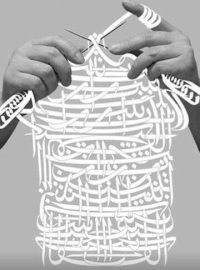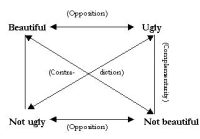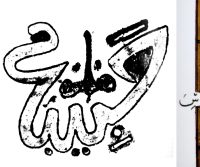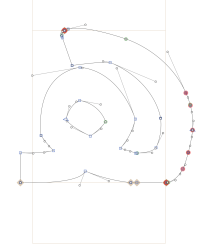
Designing Arabic Typefaces: Between Tradition and Modernity
Abstract
With the globalization of visual systems in the Middle East, new demands in Arabic graphic design arose. The imported western commercial and cultural products had created in the Arabic societies unique hybrid needs and contradicted visual languages. Unfortunately, western design methodologies and models like constructivism have hardly been understood, even by educators or designers. Modern typography is usually mistaken for calligraphic talent. The controversial European styles like Arts Nouveau have been Arabized by designers still dealing with Arabic letterforms due to sacred Islamic art. It seems that western aesthetical norms should be used en mass. Even when we identify the negative impact of the westernized Hebrew and Sanskrit scripts, many type designers still use matchmaking techniques to create Arabic typefaces out of Latin letterforms: Arabic and Latin types should look identical! (AbiFares, 2007) It is understandable to find international brands like Coca-Cola, Kodak, and KFC looking for similar corporate Arabic versions. Their products must be promoted in unified appearances with dialect language and local touch. But in the case of creating a new Arabic typeface for body text, letterforms should be designed according to Arabic reading habits. Therefore, this paper will focus on most Arabic readers and reject both abovementioned methods. A new approach to designing Arabic typefaces will be presented with the hypothesis that a mixture of old Arabic letterforms could create economic types without causing conflicts with global visual norms.
Keywords: Arabic, Latin typeface, body text, letterform, kufic, Naskhi, identity, visual language.
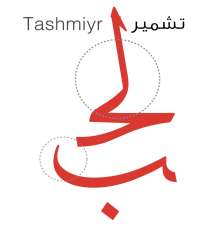
The Hybrid techniques by Arabic Typeface design
“More than ever before, emerged Arabic type designers have the chance to share ideas and knowledge with European and American colleagues. With the claim traditional letterforms can’t fulfill modern global demands, legibility and readability shaped the core discussions about the future of Arabic typography. The debate is closely linked with different interpretations of the meaning of the hybridization of the Arabic type. The first point of view explained hybridization as an adjusting tool, where Latin typographic rules applied to Arabic typeface and known as matchmaking. (Smitshuijzen-AbiFares, H. 2007, 18) The second is based on creating two scripts, Latin and Arabic, simultaneously and upon a unified structure known as bilingual. Others understood hybridization as an invitation to rediscover their heritage by using old grids or traditional letter components of archaic styles like Naskh or Kufi as bases for new typefaces. However, the three interpretations seem to contradict their aesthetical and economic functions, but from a micro perspective, they complement each other and enrich the contemporary Arabic typographic language.
The relativity-limited number of research that focused on clarifying the variations of hybridization concepts and techniques in Arabic typeface design creates difficulties and inconsistency in graphic design courses and practice. The paper’s main objective is to clarify to graphic design students and emerging Arabic typeface designers how to freely choose the adequate method for creating new fonts which can fulfill contemporary demands, such as websites, mobile applications, street signage, etc. TV captions and printed body text.
The research will describe hybridization’s meaning and diversity in Arabic typeface design (chapter 2). Chapter (3) will briefly explore the importance of a letterform and anatomy and suggest new Arabic-type anatomy. In Chapter (4), the conclusion will be defined in the light of the proposed practical technique for Arabic typefaces design, where the significant steps will be described and illustrated.”
Arabic Typeface, Arabic Type Classification, Arabic Typography
Remixing as a phenomenon in the Arabic visual language –
Graphic Design between Modernism and Post-Modernism
Abstract
Remixing is widely known within creative communities, such as musicians, designers, artists, and writers. Remixing, in the broad sense of the word, reflects the action of re-using or re-integrating of element/pattern (s) – or a part of it – that has been previously mixed. In the past decades, the journey of the Arabic visual language reflects an understanding of the rationality and strict distinguishing between cultures of modernism and even digested –somehow- the move to post-modernism in the 1970s with its overlapped paradoxes and multi-cultural languages. Especially the post-modernism Arabic creativity has encouraged designers to start communicating differently and more effectively with their culture. Their concepts are based on re-using hybrid visual patterns instead of the mono-cultural and strict unified paradigms. Today’s global economic system forced well designers worldwide to create hybrid and remixed solutions. Even many authors considered this millennium the period of Remixing and Cybernetics, where ambivalent cultural norms will be melted and unified!
The paper argues that remixing is a global phenomenon, and enough evidence reflects its existence in different paradigms within the design. Issues like the meaning of remixing in culture and design will be highlighted. The following questions will be discussed: What are the benefits of using remix modules in visual communication? Can designers, through remixing, succeed in producing non-banal designs? What is the meaning of originality within the frame of remixing? The possible answers will be given from socio-cultural and graphic design dimensions, focusing on international norms and their relation to contemporary visual language.
Keywords: Remixing, Visual Language, Poster Design, Corporate Identity – Touchpoints.
The New Arabic Type Classification System
Abstract
This paper aims to establish an agreeable classification based mainly on the form language. It can facilitate communication between all parties involved with type and letterforms – designers, typographers, type designers, calligraphers, printers, compositors, students, manufacturers, scholars, and engineers. In Chapter 2, the categories above and terms by other classifications will be briefly discussed. Questions about misusing words such as “hybrid,” and “neo.” “post-modern,” “black headlines,” and “grotesk” will be raised. Chapter (3) will
explain the new classification’s recourses, method, and used tools in light of arguments raised by Blin K. Jacob, the prototype theory, John Downer’s explanations for the meaning of “originality” of typefaces, Kühnel’s classification, and “VOX-ATYPI” classification for Latin typefaces. The latter will assist by comparing characteristics, creating new categories, and identifying the oragainilate’s grades for the Arabic typefaces. In Chapter (4), the final list of classes and their subordinates will be established and supported with a short description for each generic. The research paper will include an infographic for the primary types and their associates.
Keywords: Arabic Typeface Design, Arabic Typeface Classification, Latin Typeface Classification.
– المعايشة الإستاطيقية للعلامة الفنية
بين كتابات رومان إنجاردن وچان موكاروفسكى
تعرض الكثير من المفكرين والنقاد لماهية الفن ووظائفه والتفريق بينه وبين الفنون الإستعمالية من جهة أخرى، موضحين فى ذلك مقومات ومعايير العمل الفنى فى كل من المجالين، من الناحية التشكيلية، وما تحتويه من مضامين، مكتفين بما توصلوا إليه من نتائج شارحة لأهداف كل من المجالين.
فمثلاً نرى أحكام على الأعمال الفنية (نحت ـ تصوير ـ جرافيك) أو على أعمال لها صفات الأعمال الفنية الإستعمالية، والتصميم الصناعى، مثل تصميم الملصقات وغيرها ، والتى هى واقعة بين “الشئ الجميل” و”الشئ البغيض”، ونتسأل: هل هذة الأحكام أحكام واقعية وصحيحة؟ و ماهو رأى نظرية الجمال فى ذلك؟
فى هذا الإطار نجد الإستاطيقى الكبير “رومان إنجاردن Roman Ingarden” فى منتصف القرن الماضى مثلة فى ذلك السيميوطيقى “چان موكاروفسكى Jan Mukaruvsky” والذى ينتمى إلى نفس الفترة الزمنية والمدرسة التشيكية، قد إتجها إتجاهاً معاكساً فى العلاقة بين الفن والتصميم، طارحين السؤال عن الفن من خلال عملية قراءة أو معايشة للعمل الفنى. فنرى “إنجاردن” قد إهتم بالمتلقى وكيفية إدراكة للعمل الفنى، موضحاً الخطوات التى يمر بها من بداية “الرؤية” وحتى إصدار “الحكم الإستاطيقى”، متعرضاً لطبيعة العمل الفنى ذاته وما يحوية من سمات ومايخرج عنه من أنماط ذو مصطلحات وتعريفات.
أما “چان موكاروفسكى”، نجدة مهتماً بإعطاء العمل الفنى “عامة” صفة “العلامة الفنية”، مستعرضاً ظروف نشأتها بهدف الوقوف على مضامينها وأنواعها كعلامة مستقلة تختلف فى نظامها ووظائفها عن بقية العلامات الأخرى وخاصة المرتبطة بالأنظمة الإجتماعية.
وفى ذلك نجد منهجية ونظم علمية مثيرة ، وحلقة وصل تتلخص فى تسليط الضؤ على كل من الفنان والمتلقى وكيفية إستقبالة للعمل الفنى فى إطار تعريفة “بالعلامة الفنية” .
والبحث يطرح عدة تساؤلات عن خطوات عملية المعايشة الإستاطيقية للعمل الفنى: هل يلعب الفكر أم الخيال أو الشعور الدور الأكبر فى المتلقى؟ أم تتواجد وتتواصل تلك المناطق مع بعضها البعض فى صورة حلقات متتالية ، تبدأ من منطقة الخيال وتنتهى بمنطقة العقل؟ متعرضاً بذلك إلى منهجية رومان إنجاردن فيما يخص مراحل المعايشة لدى المتلقى وأراء السيميوطيقى چان موكاروفسكى فى تعريفة للعلامة الفنية؟ وكذلك مستعيناً بكتابات وديجراميات الأستاذ س. مازر فيما يخص الحدود والإختلافات بين المنهجين ، وبأراء كل من رودلف أرنهايم عن التأثير الإجتماعى للفن.
وينقسم البحث إلى جزئيين أساسيين موضحاً فى 2) للأرضية التى يتقابل فيها الوعى الجماعى مع الفردى أثناء المعايشة، منتقلاً فى 2.1 وحتى 2.2.6) لخطوات المعايشة الإستاطيقية على ضؤ كتابات “إنجاردن”، واقفاً فى الجزء 3) على مفهوم العمل الفنى كعلامة مستقلة، غير خاضعة للتحليل السميوطيقى لنظم علامات أخرى عند موكاروفسكى، مستنتجاً فى 3.1) و 3.2) لمفهوم العلامة الفنية عند كلاً من موكاروفسكى وانجاردن.
كل من المجالين
مابين ثقافة الحرفة اليدوية وثقافة الصناعة فى التيبوغرافيا
إزداد†بالآونة†الآخيرة فى العديد من بلدننا العربية ، وبالأخص فى†مجالات التصميم المرئى بشتى تخصصاته، ظاهرة زخرفية ،
تتناقض†مع†متطلبات†العصر،†التى†تهتم†بالمقام†الأول†بالبعد†الوظيفى†لكنهه†الرسالة†التصميمية،†وأيضاً†بأفضل†السبل
الإقتصادية†لتوصيلها. فالمصمم†الجرافيكى†الأوروبى†قد†وجد†حلولاً†منذ†أكثر†من†قرن†لطبيعة†العلاقة†التاريخية†بين†“الوظيفة†”
و”الجمال”،†نابعة†من†ثقافة†الصناعة،†1 وقام†بإستبعاد†كل†مايشغل†السطح†الطباعى†من†أشكال†لا†تخدم†كنهه†العمل. وعلى†العكس
من†ذلك،†مازلنا†اليوم†نرى†من†خلال: الكم†الهائل†من†المطبوعات،†وصفحات†الأنترنت،†وما†يظهر†على†شاشات†التلفاز،†من
أحجام†وأشكال†وألوان،†تمتلئ†بالرموز†وبأنواع†الكتابات†≠الغير†مقرؤة†بوضوح†فى†معظم†الأحوال≠†مايذكرنا†بعصور†سابقة†لم
يلعب†بها†عنصر†“التعرف†السريع” على†المعلومة†المكتوبة،†دوراً†أساسياً. 2
والشئ†المميز†لتلك†الظاهرة،†هو†التشابهة†الكبير†بين†الحلول†التصميمية†للمنتج†التطبيقى،†والذى†تارة†نراة†عاكساً†لثقافة†الحرفة
اليدوية،†وتارة†أخرى†عاكساً†“لثقافة†ما” شبيهه†بثقافة†الصناعة. وقد†أرجع†البعض†ذلك،†إلى†إستخدام†المصمم†العربى†ل
ورغبتة†فى†إظهار†حرفيتة†فى†إخراج†تصميم†يعكس†قدراتة†فى†التعامل†مع†،”Program Templates “إسطمبات†البرامج
الحاسب†الآلى،†أو†لمحاولتة†الدائبة†لتقليد†إتجاهات†غربية†(أوروبية†أو†أمريكية†..إلخ) حديثة†أو†معاصرة. والأهم†هنا†هو†هوية
المنتج†ذاته،†التى†ظهرت†وكأنها†نتاج†لإتجاة†جرافيكى/عربى،†ليدفعنا†بالتالى†للتساؤل: هل†مايحدث†الآن†ذى†هوية†عربية؟†أم
خليط†≠†مازال†فى†طور†النمو†≠†بين†ثقافتين†عربية†وأخرى†غربية؟†أم†هو†مجرد†ظاهرة†عابرة†يصعب†علينا†تفسيرها†اليوم؟
ورغم†تعرضنا†فى†أبحاث†عديدة†لكنهه†العلاقة†بين†الوظيفة†والجمال،†إلا†إننا†مازلنا†فى†أمس†الحاجة†إلى†مناقشتها†مرة†أخرى،
طارحيين†الأسئلة†عن†التيبوغرافيا†الحديثة،†ومرغمين†على†تحليل†التجربة†الغربية†الفنية،†كاشفين†عن†بعض†الحلول†البصرية
الحروف†والأشكال†المكتوبة†والمرسومة†) Calligraphy من†آرثنا†العربى. وسيبدأ†البحث†فى†توضيح†الفروق†بين†الكاليجرافيا
الحروف†والأشكال†والنظم†الطباعية) ( ٣) كوسائط†إتصالية†تختلف†فى†) Typography بنظم†يدوية) ( ٢)،†وبين†التيبوغرافيا
.( أهدافها†الوظيفية،†وفى†معايرها†الإستاطيقية،†ومنتهياً†بالخلاصة†والنتائج

